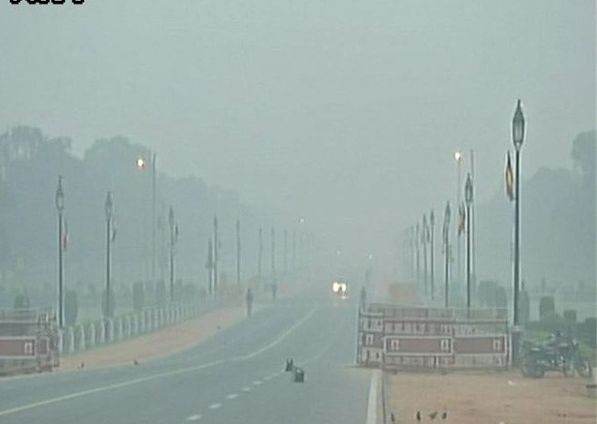New Delhi: The air quality of Delhi and National Capital Region saw a sudden deterioration from “poor” to “very poor” on Monday, with officials speculating an increase in stubble burning in neighbouring states as a “possible” reason.
Fall in the minimum temperature and decrease in the speed of northwesterly winds coming from Punjab and Haryana, where stubble burning is on the rise for the past three days despite the green court’s order to the contrary, the national capital and the surrounding regions are likely to inhale toxins for a few more days.
“There is a possibility of stubble burning being the reason of the hike in pollution levels in the region,” A. Sudhakar, Member Secretary of the Central Pollution Control Board (CPCB) told IANS.
Satellite images from the National Aeronautics and Space Administration (NASA) on Monday showed increased stubble burning in parts of Haryana and Punjab’s Amritsar, Tarn Taran, Firozpur, Fazilka, Muktsar, Bathinda, Moga and Kapurthala districts in the past two days.
“The average air quality of Delhi due to several reason would range between ‘poor’ to ‘very poor’ for some days,” Sudhakar added.
According to the weather department, the wind speed in Delhi-NCR has come down from 10-15 kmph on Sunday to 10 kmph or below on Monday, due to which it is not able to dissipate additional pollutant from the neighbouring states.
Meanwhile, focused on the long-term measures to tackle the smog situation during the winters 2018″, the CPCB has directed the India Meteorological Department (IMD) to update their “inaccurate system” and develop an “early warning system” for issuing advance warnings of air pollution.
“IMD is supposed to develop the early warning system to warn of the smog situation here or the possibility of a dust storm reaching Delhi through Afghanistan. The system at IMD are not accurate as earlier they predicted that dust won’t reach Delhi but it did… At least with early warning we will have time to prepare,” Sudhakar said.
According to the CPCB, the average Air Quality Index (AQI) of Delhi-NCR on Monday at 5 p.m was 316 points “very-poor”, compared to 292 (poor) on Sunday.
The average AQI of Delhi as monitored by 17 active stations of the CPCB at 5p.m was 324 points (very-poor) against 292 (poor) on Sunday.
The major pollutant, PM2.5, or particles with diameter less than 2.5 micrometers, was recorded above the danger limit of 324 units on Monday in Delhi– about 12 times the safe limit, against 290 units on Sunday.
The Delhi Technical University in north Delhi was the most polluted region in Delhi, with AQI at 373 points, while for Ghaziabad in NCR it was 368.
According to the System of Air Quality and Weather Forecasting and Research (SAFAR), the air quality of Delhi-NCR is likely to remain “very poor” for at least next three days.
IANS
Delhi air ‘very poor’ again ‘possibly’ due to stubble burning

